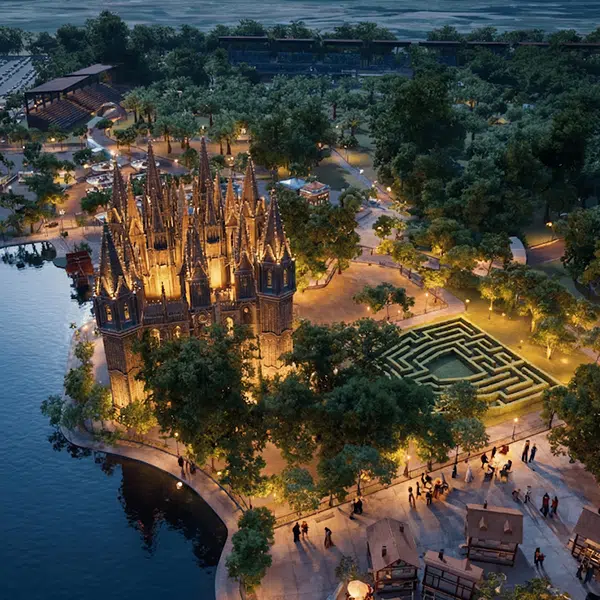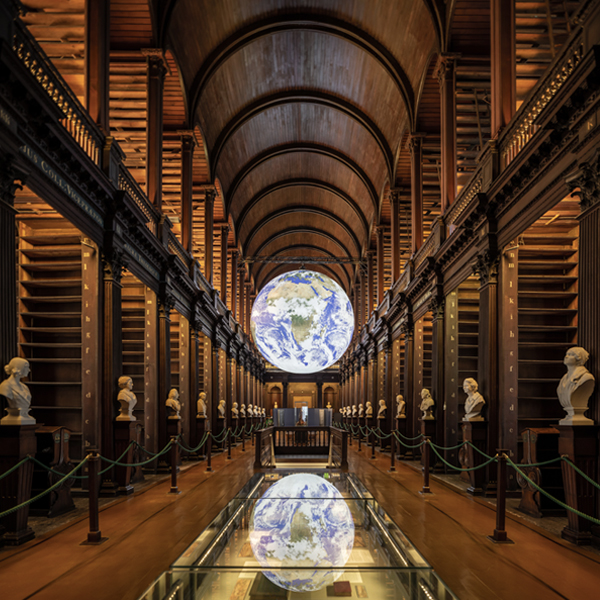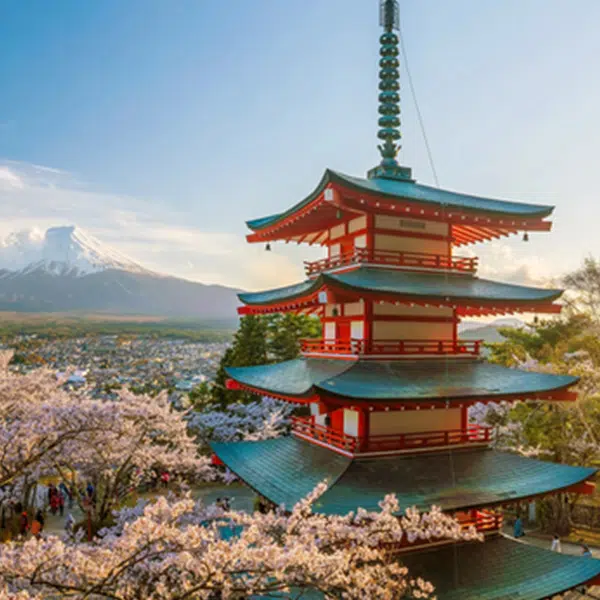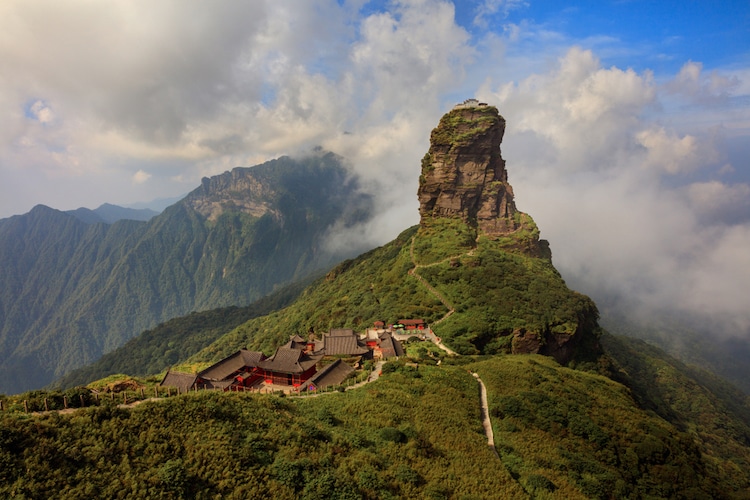
Stock Photos from clkraus/Shutterstock
High up in China's Wuling Mountains sits two Buddhist temples. Perched on top of Fanjingshan, which is the highest peak in the mountain range, there are an astonishing 8,888 steps to climb in order to reach these places of worship. Their construction is a stunning testament to the faith and devotion of Chinese Buddhists, who consider Fanjingshan a sacred mountain.
Also known as Mount Fanjing, the area was made a UNESCO World Heritage Site in 2018 and sits within the Fanjingshan National Nature Reserve in Guizhou province. It's of high importance in Buddhism because it's believed to be the Maitreya Buddha's bodhimaṇḍa, or “place of enlightenment.” Temples were built along the mountain as far back as the 7th century BCE when the Zangke Road was constructed, as it was easier to transport materials.
The peak of construction on Fanjingshan occurred during the Ming dynasty, when nearly 50 Buddhist temples were constructed as destinations for the devout pilgrims who made the journey to visit the sacred area. While most of those temples have since been destroyed, there are plenty of intact pieces of architecture to take in. In fact, the area is now a popular destination both for Buddhists and secular tourists looking to drink in the spectacular views.
Just two sacred Buddhist temples on top of Fanjingshan mountain in China from r/interestingasfuck
For many, there is arguably no better view of the world than the one that can be seen from the Red Clouds Golden Summit, also known as New Golden Summit. Here, perched 2,336 meters (7,664 feet) above sea level, sits the Temple of Buddha and Maitreya Temple. Separated by a gorge, visitors pass from one temple to the other on a narrow stone bridge. It takes about four hours to hike the nearly 9,000 steps to the temples, though there are rest stops with snacks along the way. Another option is to take a cable car, which brings you to Mushroom Stone. Located close to the top of Mount Fanjing, this strange rock formation speaks to the area's prehistoric creation.
As incredible as Red Clouds Golden Peak is, it's just one of three summits at Fanjingshan. With such an incredible landscape, it's no wonder that Fanjing is short for Fantian Jingtu or “Brahma's Pure Land.” Brahma is one of Buddhism's four heavenly kings and this otherworldly environment would certainly be befitting of a king.
Because Fanjingshan remained relatively isolated for so many years, it has an astonishing amount of biodiversity. With altitudes ranging from 500 meters (1,640 feet) to 2,570 meters (8,431 feet) above sea level, it's home to over 2,000 endemic plant species and hundreds of endangered animals. In fact, some species date to the Tertiary period—between 66 million and 2 million years ago.
Though the site has certainly seen a rise in popularity with its inclusion on the UNESCO World Heritage list, its location still provides some level of isolation from the crowds. This ensures the continued survival of the ecosystem, even in the face of increased tourism.
Fanjingshan is the highest peak in China's Wuling Mountains and is a sacred place in Chinese Buddhism.
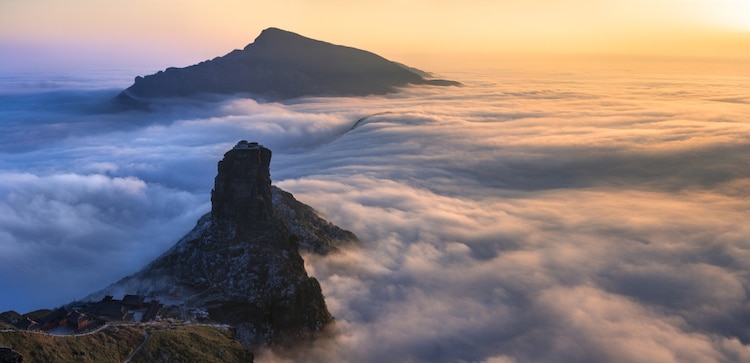
Stock Photos from clkraus/Shutterstock
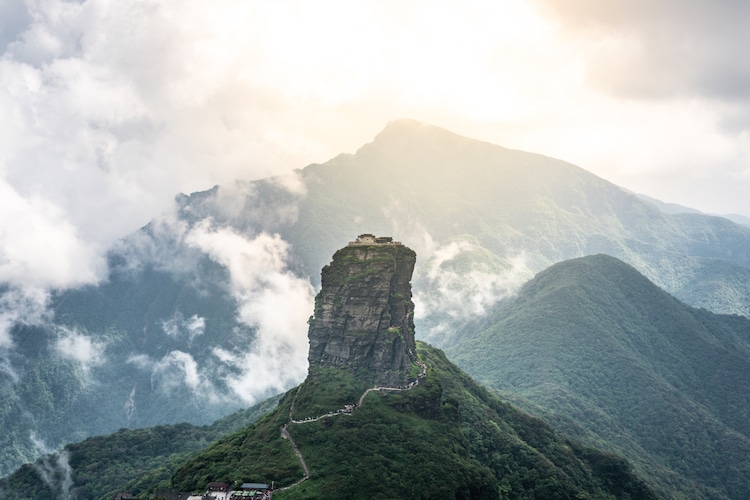
Stock Photos from Keitma/Shutterstock
This place of enlightenment includes New Golden Summit, where two Buddhist temples are perched high in the sky.

Stock Photos from clkraus/Shutterstock
Since the 7th century, Buddhist temples have been built along the mountainside.
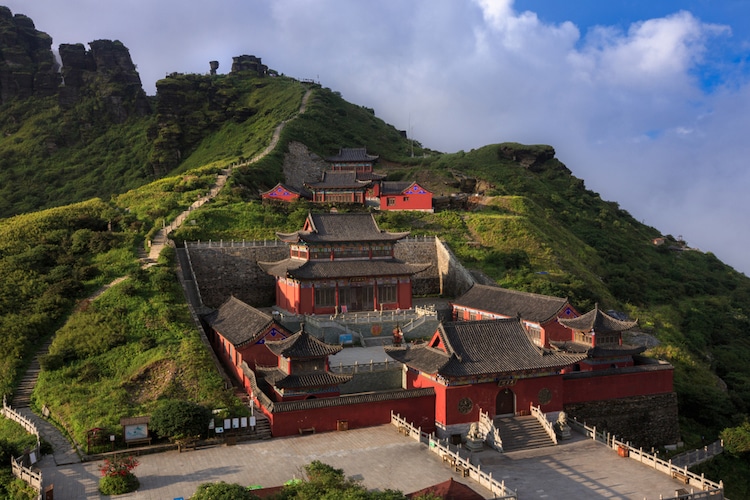
Stock Photos from clkraus/Shutterstock
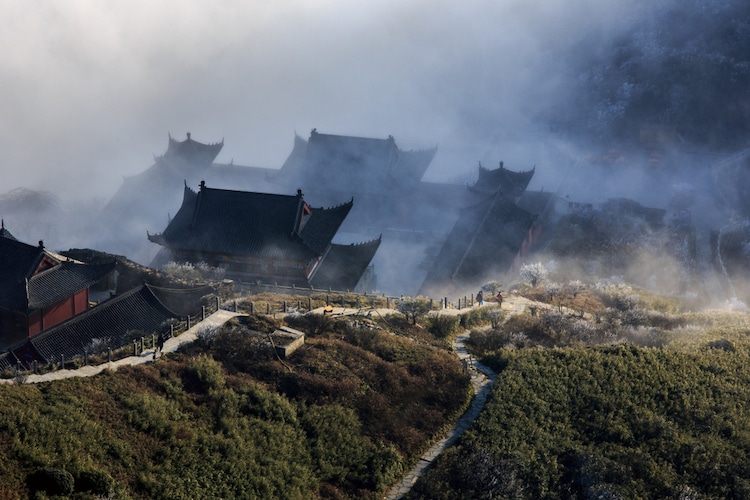
Stock Photos from clkraus/Shutterstock
Nearly 9,000 narrow steps lead the devoted up to the sacred summit.
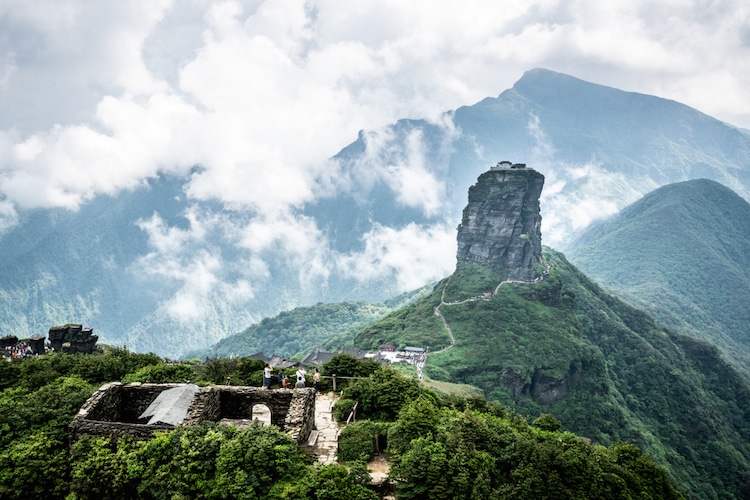
Stock Photos from Keitma/Shutterstock
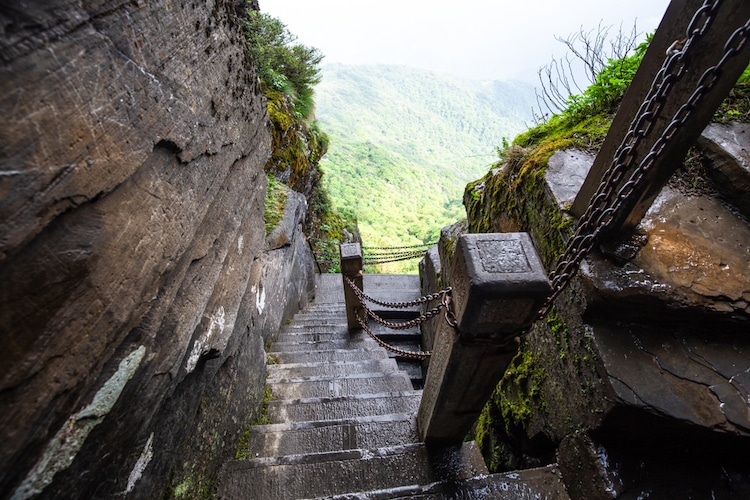
Stock Photos from Jimmy Yan/Shutterstock
Mount Fanjing, which is a UNESCO World Heritage Site, is also filled with strange rock formations…
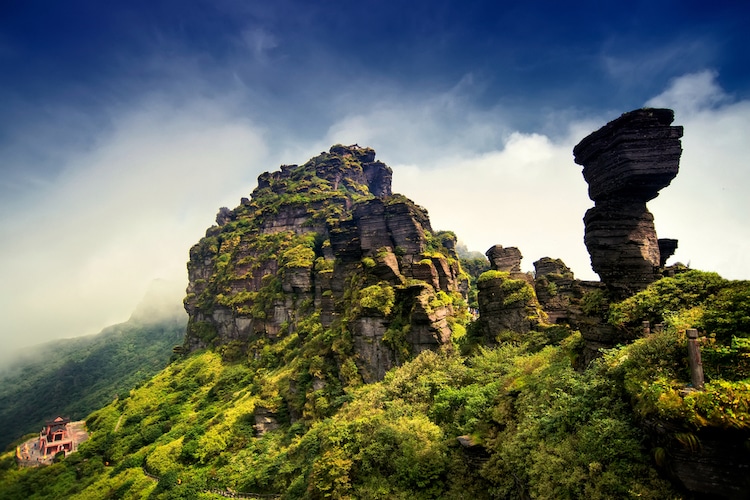
Stock Photos from sanyanwuji/Shutterstock
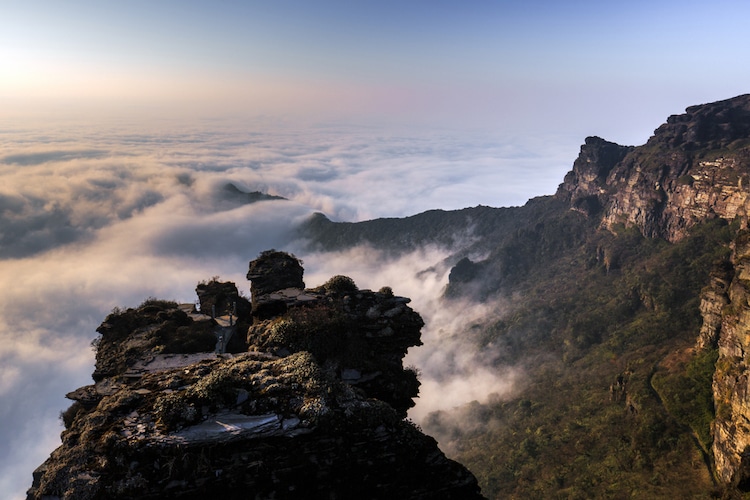
Stock Photos from clkraus/Shutterstock
And is a hive of biodiversity, with over 2,000 native plant species and hundreds of endangered animals.

Stock Photos from Keitma/Shutterstock
Today both pilgrims and secular tourists flock to the site for the spectacular views.
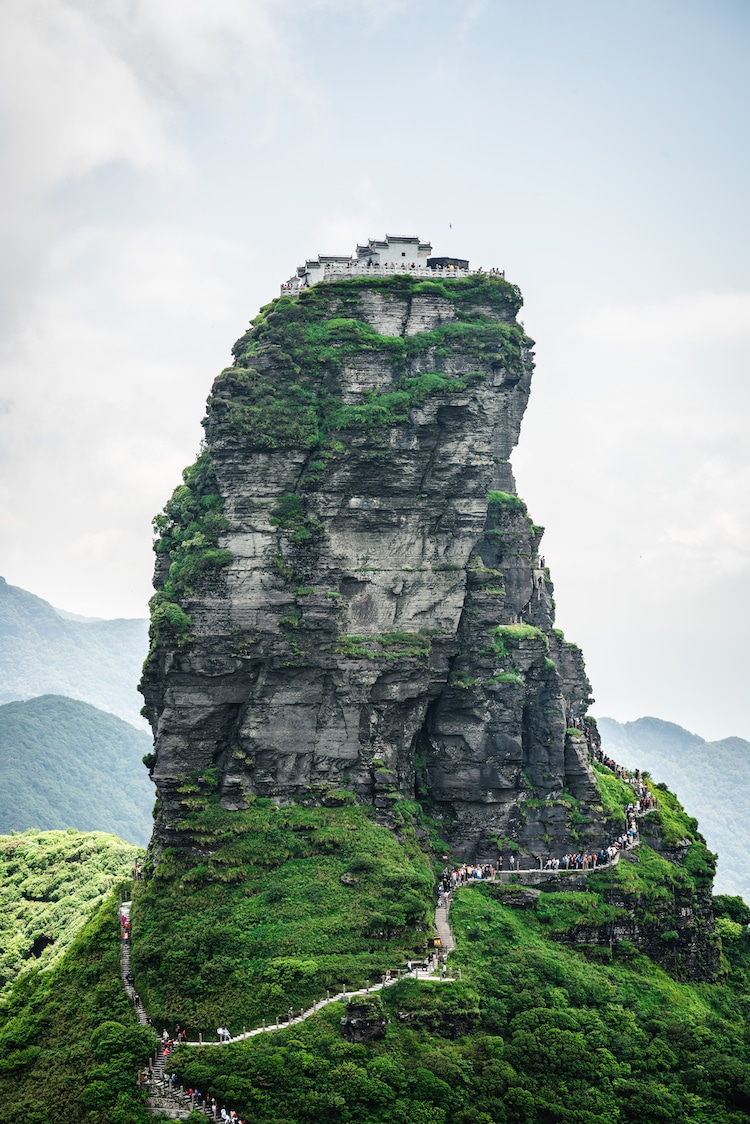
Stock Photos from Keitma/Shutterstock
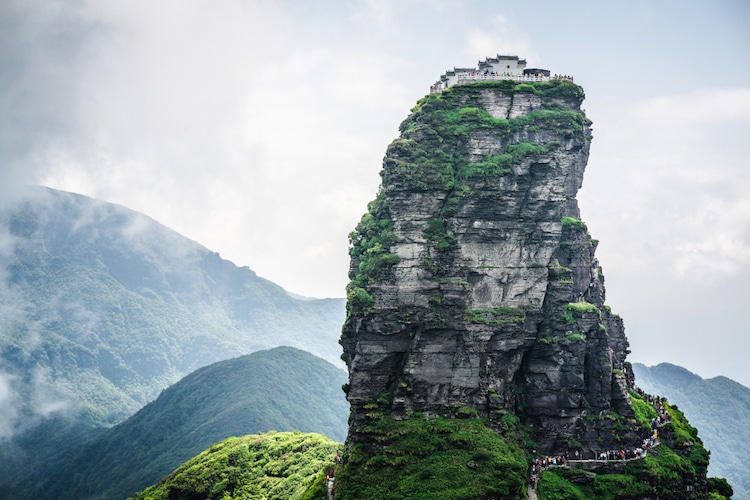
Stock Photos from Keitma/Shutterstock
Related Articles:
World’s Tallest Outdoor Elevator Soars 1,000 Feet High Along Sandstone Cliff
This Beautiful Forest in the Sky Inspired the “Floating Mountains” in Avatar
Giant Pair of Hands Hold Up a Curving Pedestrian Bridge in Vietnam
UNESCO Announces 29 New World Heritage Sites Around the World











































































